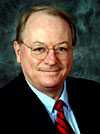Related Topics
Particular Sights to See:Center City
Taxi drivers tell tourists that Center City is a "shining city on a hill". During the Industrial Era, the city almost urbanized out to the county line, and then retreated. Right now, the urban center is surrounded by a semi-deserted ring of former factories.
Sights to See: The Outer Ring
There are many interesting places to visit in the exurban ring beyond Philadelphia, linked to the city by history rather than commerce.
Medical reform Subjects (1)
New topic 2019-05-24 20:49:32 description
While the City Sleeps

|
| David Dinges |
For almost a century, it's been a settled rule that it takes "half an hour" to get from home to work. In a sense, that's just a figure of speech because it rather obviously takes most people longer than that. But in another sense, the thirty-minute rule persists in fact, because that's how long it takes to travel to the outer edge of the suburbs. That time requirement has not changed in decades. As people increasingly live beyond the outer edge of the suburbs, it takes them thirty minutes to get to that point, with "exurban" travel time as an extra, often significantly extra. It would appear from common parlance that the thirty-minute distance is fixed and settled; the exurban extra time consumption is open to argument, still subject to change.
Let's restate this business. Thirty-minute commuting is what everyone must do, but travel beyond the suburban line is still considered an elective option. Other options are to read books, go to professional society meetings, fiddle with computers, or chat using a variety of new electronic instruments. One option is at least briefly considered by everyone: get less sleep. The World Health Organization has shown that finding extra time to commute by sleeping less is nearly universal. Philadelphia's Institute for Experimental Psychiatry has measured the physical cost of doing so. Essentially, you can accumulate a deficit of sleep for a week, then restore your freshness by one or two good sleep. At the very least, biological pressure of that sort is going to compete with Sunday morning church attendance. Of course, maybe it works the other way; maybe atheists feel free to move to the exurbs.
There's another residential option, to build vertically upward in what is commonly called "condos". From the church attendance point of view, it's an interesting observation that people who live in houses downtown seem to get dressed for church, followed by Sunday Strollers Brunch. Dwellers in condos, however, seem to prefer to spend the time at sidewalk tables on Rittenhouse Square, South. Quite obviously, some other considerations may be dominant. When the housing bubble finally bursts, it will be interesting to see what it will uncover in the way of convoluted social effects.
Certain facts will remain hard facts. According to Euclid, the area within a circle expands three times as fast as the square of the radius. Hence the population is first to spread thinner as it expands outwards, then silts up with more people. In our case, the census bureau reports exurban commuting time has about doubled in fifteen years, so traffic gets more crowded at that rate. People make up for it by sleeping late on Sunday, then start giving up something else. They don't want to give these things up, so they skirt the edge of chronic sleep loss. They fall asleep in movies, or in lectures -- or at the wheel of the moving car. The cities grow larger, urban sprawl spreads further out. Mixing all factors together, one would suppose there's an invisible limit to how wide each city can grow. After that point is reached, there's only increased density insight if population numbers continue to increase.
Originally published: Thursday, June 22, 2006; most-recently modified: Friday, May 24, 2019